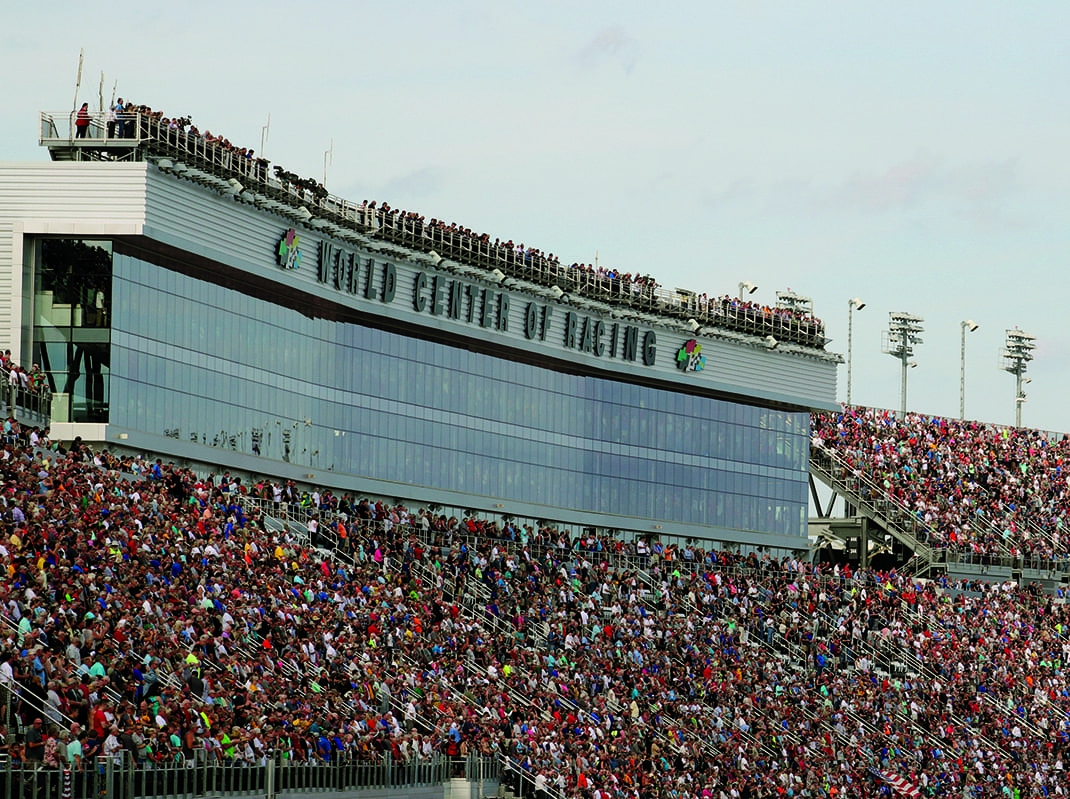One of the most overlooked members of any NASCAR race team is the spotter.
Tasked with standing high above the race track, the spotter serves as the eyes in the sky for the driver and the crew chief.
While some spotters have never driven a race car, many got their starts in motorsports behind the wheel of a race car before transitioning to the role of spotter.
Two examples are 52-year-old Tim Fedewa, the spotter for Kevin Harvick in the Monster Energy NASCAR Cup Series, and 30-year-old Coleman Pressley, who spots for Brad Keselowski at NASCAR’s top level.
Opportunities for Fedewa and Pressley dried up on the driving side, leading both to eventually go from driving race cars to spotting for other drivers. Neither driver planned on making the transition, it just kind of happened.
“I was still holding on to being able to drive a little bit and hoping that something would work out. It was harder than I thought, for sure,” said Fedewa, who ran his last full-time season in what is now the NASCAR Xfinity Series in 2004. “I kind of took for granted what the spotters do when I was driving and I got a different perspective, that’s for sure.”
Fedewa began his transition to the spotters’ stand in the early 2000s as he started to have a harder and harder time finding opportunities to drive. He eventually landed a deal to spot for Bill Elliott at Evernham Motorsports. It was an opportunity that kick-started his career as a spotter.
“I’d race on Saturday and spot for him on Sunday,” Fedewa recalled. “One thing led to another and there weren’t any rides coming my way, so I just transitioned into a full-time spotter.”
Pressley’s situation was similar. His first time working as a spotter came in 2011, when he spotted for then teammate Matt DiBenedetto at a late model race.
“He needed a spotter, so I spotted and his exact words after the race were, ‘Wow, I’ve been running Busch races and K&N races and you’re the best spotter I’ve had,’” Pressley said.
After spending some time helping Johanna Long and ML Motorsports in the NASCAR Xfinity Series, Pressley landed a job as spotter for A.J. Allmendinger at JTG Daugherty Racing in 2015. He’s been a full-time spotter in the Monster Energy NASCAR Cup Series since.
“When I first started it was very weird, because all I did was the Nationwide (Xfinity Series) races for Johanna,” Pressley explained. “During that time, I was still planning and had all intentions of being a driver. That part was weird because I never really fully committed myself to it. It wasn’t until I got the deal with Allmendinger that I fully committed to spotting and didn’t care if I drove again.
“I’ve run two late model races since then. It doesn’t bother me. Yeah, you get the itch to want to go do it, but once you get to the Cup level and you’re able to spot for one of the 40 best in the world, it makes you change your perception and your goals change. Instead of winning races as a driver, I get as much satisfaction winning races as a spotter.”
Fedewa landed with Harvick at Stewart-Haas Racing in 2014, the same year Harvick departed Richard Childress Racing to join the team co-owned by Gene Haas and three-time NASCAR Cup Series champion Tony Stewart.
He admits that being a spotter is a harder job than he initially thought.
“I thought it would come natural. It’s a process to become, what I feel like, is a good spotter,” Fedewa said. “Me and Bill’s communication was good at first I thought, but there were a lot of things I was lacking as far as what I could relate to the crew chief and what I picked up procedurally as far as the rules go. You’ve got to know all of that. You have to be the liaison between the crew chief and the driver to be good at it. There are guys that can just clear you, but there is a lot more to the spotter role than just saying clear.”
Pressley explains it a bit further, saying that being a NASCAR Cup Series spotter requires an eye for details.
“I could see the average person thinking you’re just up there saying, ‘Inside, outside, clear,’” Pressley said. “There is so much more to it than that. Honestly, to me, that’s the least qualified part of my job. A fan in the stands could tell you if someone’s inside, outside or clear. It’s the little things.
“With this package we have right now, it’s understanding how the runs are coming from behind and what lane they’re running, being specific whether if they’re a tire width lower or two lanes higher,” Pressley added. “Are they turning down early to get a draft off of you? Are they turning down early to throttle up early to try and get underneath you? It’s all the details that add up to make our job the toughest.”
One might think that being a spotter is less stressful than being a race car driver, but that may not be the case. People like Fedewa and Pressley have a better understanding of the stress levels involved and Fedewa has no problem admitting that being a spotter comes with a certain level of stress.
“We take it so seriously. You’ve got to be on point. There is a lot going on,” Fedewa said. “Not on track, but procedurally, coming down pit road, not getting a pit-road speeding penalty, not overshooting your box, getting in your box so you don’t get a penalty. There are just a lot of procedures you have to remind a driver of.
“Really, I think there is a high level of stress on race day for sure.”
If anyone is prepared to handle that kind of stress, it’s former drivers like Fedewa and Pressley.
